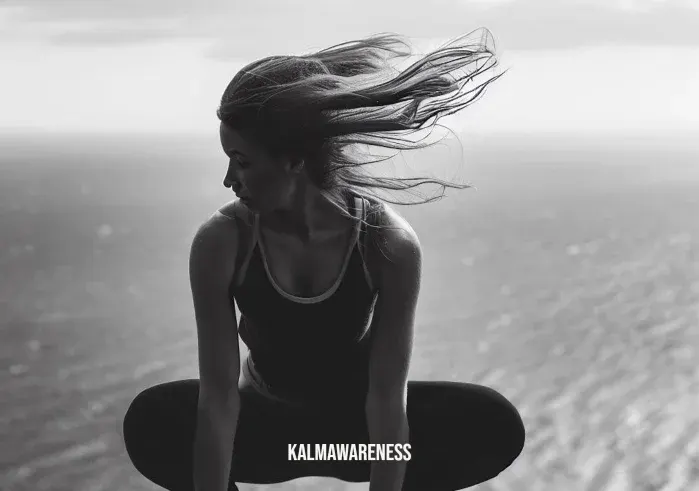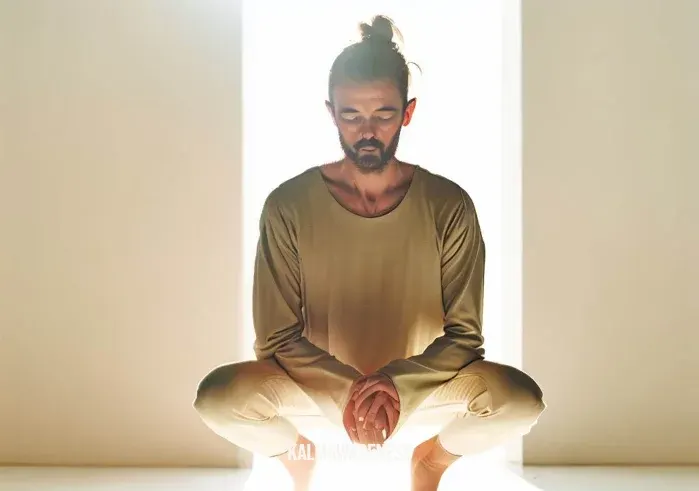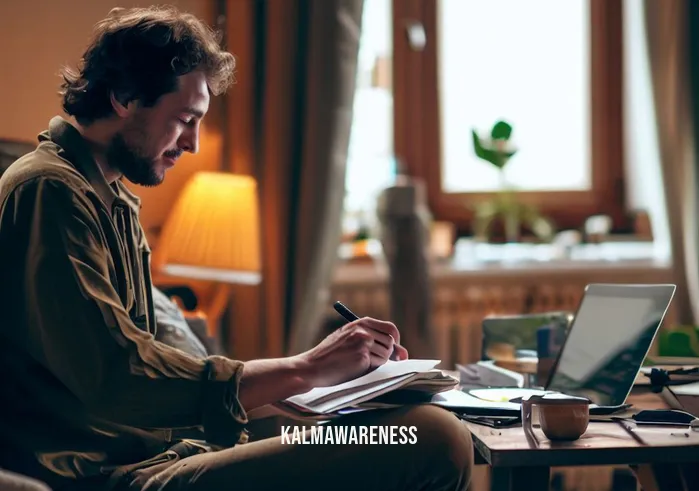The Squat Pose Yoga
In this article, we will delve into the invigorating world of Yoga and explore one of its fundamental poses – the Squat Pose Yoga. This pose, also known as Malasana, offers a multitude of benefits for both the mind and body. We will guide you through the step-by-step process of performing this pose and provide insights into its original name, difficulty level, category, and more.
| Description | Explanation |
|---|---|
| Pose Name | Squat Pose Yoga (Malasana) |
| Original Name | Malasana |
| Difficulty Level | Beginner to Intermediate |
| Pose Category | Standing Yoga Pose |
| Exercise Duration | Hold for 30 seconds to 1 minute |
Getting to Know the Squat Pose Yoga
The Squat Pose Yoga, or Malasana, is a grounding asana that dates back to ancient times. It is often referred to as the “Garland Pose” due to its resemblance to a garland or a squatting position. This pose involves bending the knees deeply while keeping the feet flat on the ground, allowing for a comfortable squatting stance.
Health Benefits of the Squat Pose Yoga
- Strengthens the Lower Body: The Squat Pose engages the thighs, hamstrings, and calves, toning and strengthening the lower body muscles.
- Hip Opener: It opens up the hips and stretches the groins, promoting flexibility and mobility in the hip region.
- Digestive Health: This pose stimulates the digestive organs, aiding in digestion and improving bowel movements.
- Posture Improvement: Regular practice of Malasana helps in improving posture and aligning the spine.
- Balance and Focus: As it requires concentration and balance, it enhances focus and mental clarity.
Step-by-Step Guide to Performing Squat Pose Yoga
- Starting Position: Stand with your feet slightly wider than hip-width apart, toes pointing slightly outward.
- Bend Your Knees: Exhale as you bend your knees, lowering your hips towards the ground. Keep your heels firmly planted on the floor.
- Hands in Prayer Position: Bring your palms together in a prayer position at your chest, pressing your elbows against the inner thighs. Use your elbows to gently open the knees wider.
- Lengthen Your Spine: Keep your back straight and elongate your spine. Engage your core muscles for stability.
- Gaze Forward: Direct your gaze forward, keeping your neck aligned with the spine.
- Breathing: Take deep breaths while holding the pose, focusing on your breath to find balance and relaxation.
- Hold the Pose: Hold the Squat Pose for 30 seconds to 1 minute, gradually increasing the duration as you become more comfortable with the pose.
Tips:
- If you find it challenging to keep your heels on the floor, you can place a folded blanket under your heels for support.
- For a deeper stretch, press your elbows against the inner knees, gently encouraging them to move apart.
Squat Pose Yoga for Beginners
If you are new to Yoga or have limited flexibility, performing the Squat Pose might feel a bit challenging initially. Remember to listen to your body and go at your own pace. It’s essential not to force the pose but to find a comfortable and sustainable position.
Squat Pose Yoga for Advanced Practitioners
For those with more experience in Yoga, the Squat Pose can be a great addition to your practice. You can explore variations of the pose by adding twists or arm balances, making it more dynamic and engaging.

Discovering the Benefits, Limitations, and Variations of Squat Pose Yoga
Welcome back to our exploration of Squat Pose Yoga (Malasana). In this chapter, we will delve deeper into the fantastic benefits this pose offers, understand who can and cannot practice it, and explore various variations suited for practitioners of different experience levels. Let’s dive in and continue our Yoga journey with enthusiasm!
Health Benefits of Squat Pose Yoga
Squat Pose Yoga, with its simple yet powerful posture, brings a plethora of benefits to your physical and mental well-being. Let’s explore how incorporating this pose into your regular Yoga practice can enhance your overall health:
- Strengthening the Core: Squat Pose actively engages the core muscles, helping to build a strong and stable core.
- Toning the Pelvic Floor: Regular practice can tone the pelvic floor muscles, promoting better bladder control and reproductive health.
- Enhanced Flexibility: Malasana stretches the ankles, groins, and lower back, enhancing overall flexibility.
- Improved Digestion: By compressing the abdomen, Squat Pose stimulates the digestive organs, aiding digestion and metabolism.
- Energy Flow: This pose is believed to stimulate the flow of energy (prana) in the body, promoting vitality and a sense of well-being.
- Release of Tension: The deep hip-opening action of Malasana helps release tension and stress stored in the hips and lower back.
- Inner Thigh Strength: The pose strengthens the inner thigh muscles, which is beneficial for various daily activities.
- Mental Focus: As you balance and hold the pose, your mind becomes more focused and present, improving mental clarity.
Who Should Avoid Squat Pose Yoga?
While Squat Pose Yoga offers numerous benefits, it might not be suitable for everyone. Here are some individuals who should avoid practicing this pose:
- Knee or Ankle Injuries: If you have knee or ankle injuries or discomfort, it’s best to avoid deep squatting positions like Malasana. Consult a healthcare professional before attempting this pose.
- Lower Back Issues: People with chronic lower back problems should be cautious while practicing Squat Pose. Modifications or alternative poses may be more suitable.
- Pregnant Women: Pregnant women, especially in later stages of pregnancy, should avoid deep squats. Instead, they can perform modified poses under the guidance of a qualified prenatal Yoga instructor.
- Hip Impingement: Individuals with hip impingement or hip-related issues should approach Squat Pose with caution or avoid it altogether.
Variations of Squat Pose Yoga
Squat Pose Yoga can be modified and adapted to suit different levels of experience and flexibility. Here are some variations you can explore based on your Yoga journey:
1. Supported Squat: If you find it challenging to keep your heels on the ground, use yoga blocks or a rolled-up mat under your heels to provide support and make the pose more accessible.
2. Twisting Squat: Add a twist to the pose by placing one hand on the ground and the other hand reaching towards the ceiling. This variation increases spinal rotation and adds an element of balance.
3. Malasana with Eagle Arms: Cross your arms in front of your chest, bringing one elbow over the other, resembling eagle arms. This variation opens up the shoulders and upper back while maintaining the benefits of the Squat Pose.
4. Crow Pose into Squat Pose: Transition from Crow Pose (Bakasana) into Squat Pose for an advanced sequence. This combination challenges your arm and core strength while incorporating the grounding aspect of Malasana.
5. One-Legged Squat: Extend one leg forward while squatting on the other leg. This variation requires increased balance and adds intensity to the pose.
Remember, as with any Yoga practice, listen to your body and honor its limits. It’s always best to practice under the guidance of a qualified Yoga instructor, especially when exploring advanced variations.

Unraveling the History and Spiritual Significance of Squat Pose Yoga
As we journey further into the captivating world of Squat Pose Yoga (Malasana), this chapter will take us back in time to explore the historical roots of this ancient posture. Additionally, we’ll delve into its spiritual significance and uncover valuable tips for maximizing the benefits of this pose. Get ready to immerse yourself in the rich heritage and spiritual essence of Squat Pose Yoga!
The Historical Origins of Squat Pose Yoga
Squat Pose, also known as Malasana, has a deep-rooted history in the ancient practice of Yoga. This pose finds its origins in traditional Indian Yoga texts and has been embraced by practitioners for centuries. In ancient times, people used to perform natural squatting positions as part of their daily activities, like cooking, resting, and socializing.
The historical significance of Malasana lies in its connection to the concept of grounding and connecting with the earth. It symbolizes a humble and centered approach to life, as well as the importance of finding stability amidst life’s challenges. As Yoga spread across the globe, so did the practice of Squat Pose, and today, it continues to be a staple in many Yoga classes and sequences.
The Spiritual Essence of Malasana
In Yoga, every posture carries a deeper spiritual meaning. Squat Pose Yoga is no exception. It is often associated with the Muladhara Chakra, also known as the Root Chakra. The Root Chakra represents our foundation, sense of security, and connection to the physical world. When practicing Malasana, you activate and balance the energy of this chakra, fostering a sense of stability and confidence in both the physical and spiritual realms.
Furthermore, the Squat Pose encourages introspection and inner reflection. As you lower yourself towards the earth, it symbolizes bowing to the ground and acknowledging the divine presence within you and all living beings. This act of surrender helps cultivate humility and gratitude, fostering a deeper spiritual connection with oneself and the universe.
Tips for Enhancing Your Squat Pose Practice
To reap the full benefits of Squat Pose Yoga, consider incorporating these tips into your practice:
- Alignment is Key: Pay attention to your alignment, ensuring your knees track over your toes and your spine remains elongated throughout the pose.
- Breathing with Intent: Focus on deep, steady breaths while holding the pose. Inhale to lengthen the spine, and exhale to sink deeper into the squat.
- Consistency is Key: Practicing Squat Pose regularly will gradually improve your flexibility and stability. Be patient with yourself and trust the process.
- Warm-Up: Prior to attempting Malasana, warm up your hips, ankles, and lower back with gentle stretches and movements.
Common Mistakes to Avoid
Avoid these common mistakes to ensure a safe and effective practice:
- Rounded Back: Maintain a straight spine and avoid rounding your back to prevent strain on the lower back.
- Knees Overextending: Do not allow your knees to extend beyond your toes, as it may lead to knee discomfort or injury.
- Forcing the Pose: Listen to your body and avoid forcing yourself into the pose. Gradually work towards a comfortable squatting position.
Modifications for Injuries or Limited Flexibility
If you have injuries or limited flexibility, consider these modifications:
- Use Props: Utilize props like yoga blocks or a bolster under your heels for added support.
- Wide-Legged Squat: Widen your stance for a more accessible version of the pose, reducing pressure on the hips and knees.
Complementary Poses to Enhance Your Practice
To complement your Squat Pose Yoga practice, consider incorporating the following poses:
- Downward-Facing Dog (Adho Mukha Svanasana): This pose stretches the entire body, including the hamstrings and calves, preparing you for Malasana.
- Pigeon Pose (Eka Pada Rajakapotasana): Pigeon Pose opens up the hips, making the squatting position more comfortable.
- Wide-Legged Forward Bend (Prasarita Padottanasana): This pose further stretches the hamstrings and groins, preparing you for Malasana.
- Seated Forward Bend (Paschimottanasana): Paschimottanasana stretches the entire back and hamstrings, complementing the hip-opening nature of Malasana.
Conclusion
As we conclude this chapter, we’ve explored the historical significance and spiritual essence of Squat Pose Yoga. Understanding the roots of this posture adds depth to our practice and enriches our connection to the ancient tradition of Yoga. By incorporating the provided tips and avoiding common mistakes, you can optimize the benefits of Malasana. Moreover, modifications cater to individuals with injuries or limited flexibility, making Yoga accessible to all.
In the final chapter of our Yoga Pose article, we will delve into breathing techniques to deepen your practice, explore the meditative aspect of Squat Pose, and unveil additional complementary poses to further enhance your journey towards inner peace and well-being.





